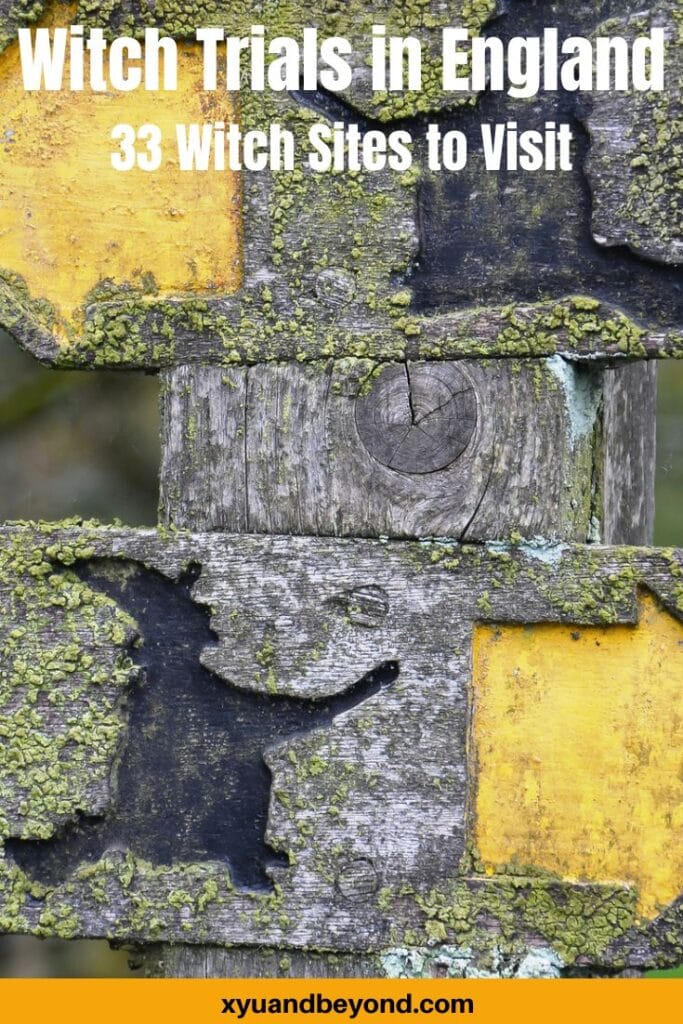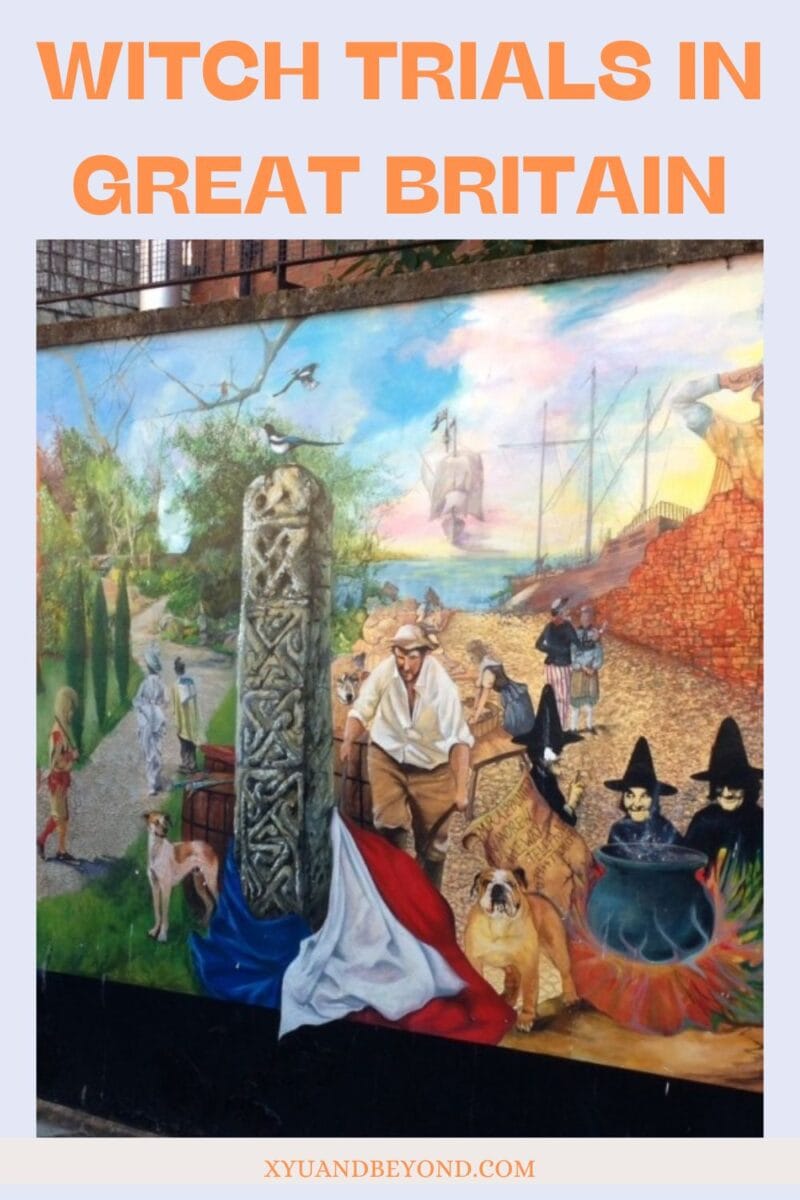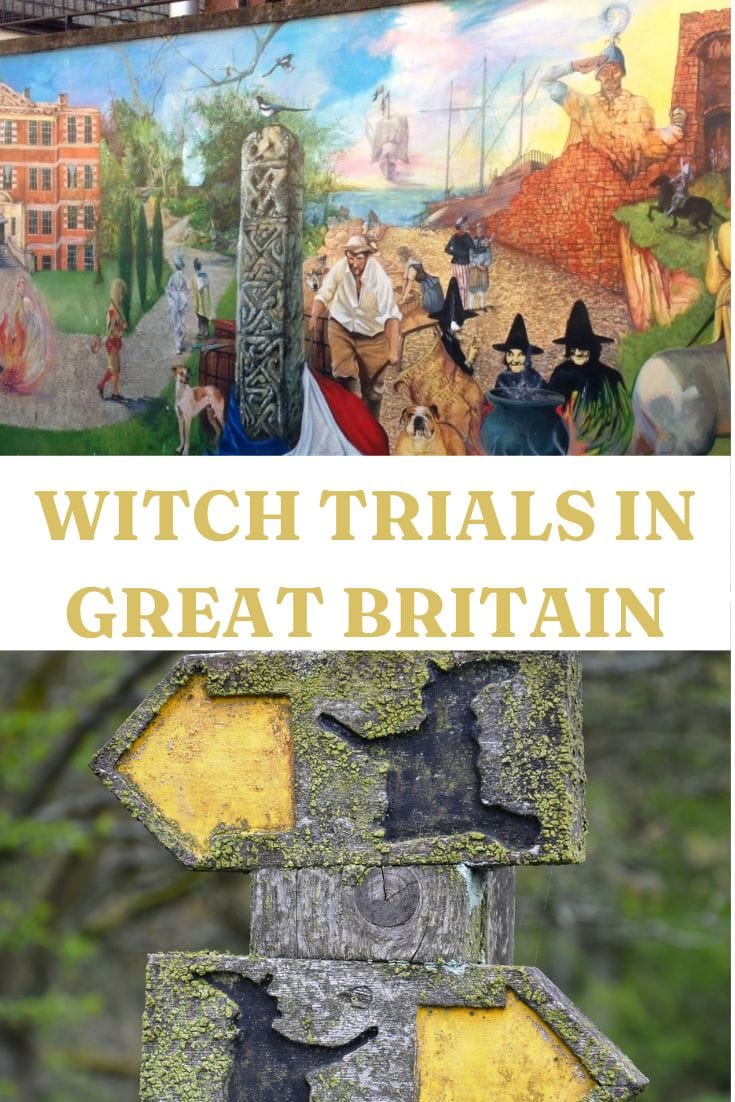Witch Trials in England: 33 Witch Sites to Visit
There were many famous European witch trials and the witch trials in England and Scotland included many stories of famous witches and where they practised around the United Kingdom.
I enjoy seeking out and finding those locations when I travel where history was made and the history of witchcraft is one of my passions. I’ve visited sites in Ireland – which by the way did not suffer from the same hysteria as the rest of Europe when it came to witches. There were over 2,000 witch trials in France and in Spain between 1609 and 1614, when up to 7,000 were accused of witchcraft.
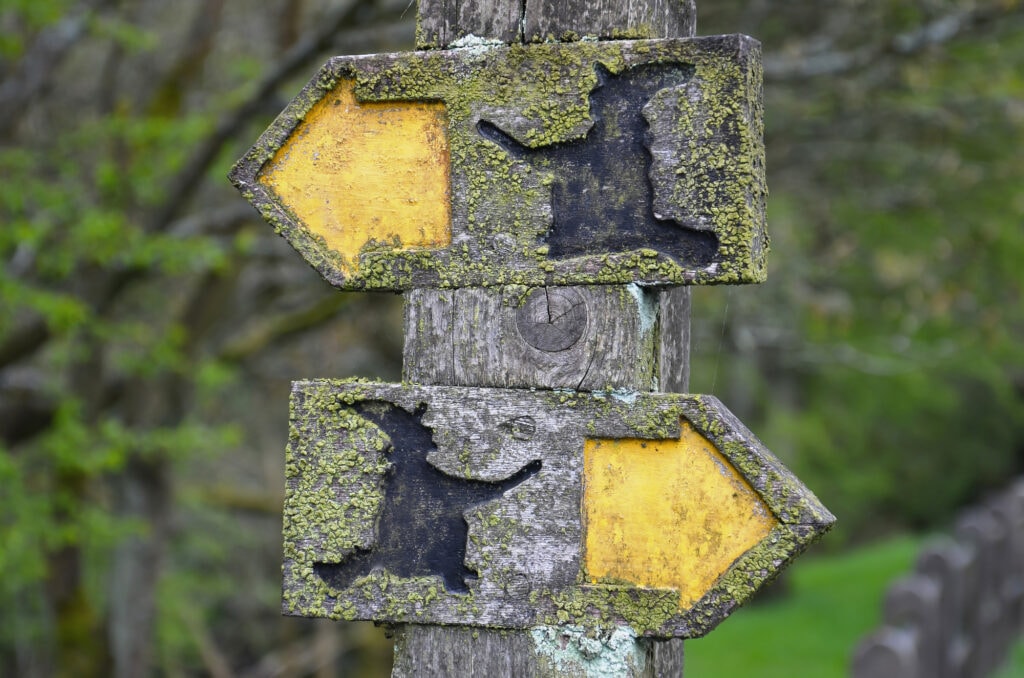
History of witchcraft in England
The Witch trials in England began in the 15th century and lasted until the 18th century. The witch trials in England 17th century were at their most intense stage during the English Civil War the Puritan era of the mid-17th century.
Over 500 to 1000 people were executed in Britain as witches most of whom were women (90% is estimated). The figures are not exact because many records were destroyed over the centuries.
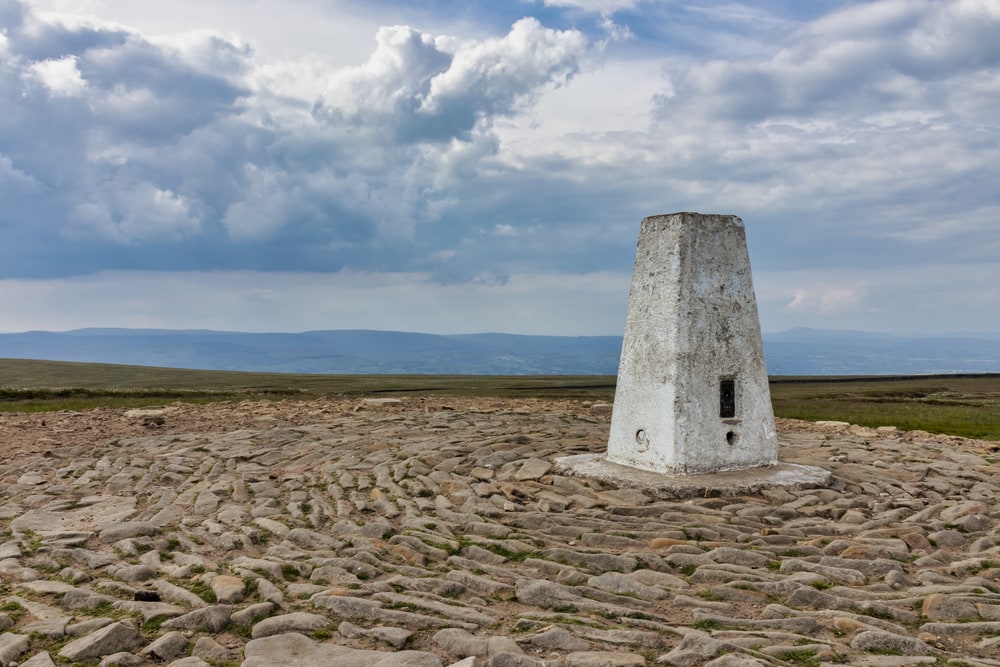
When Elizabeth inherited the throne of England in 1558 Catholics had to go back into hiding but in remote wild places such as Lancashire, priests celebrated the Mass in secret.
It was Elizabeth in the year 1562 who passed a law known as An Act Against Conjurations, Enchantments and Witchcrafts. The punishment was the death penalty but only if harm had been caused, smaller offences were punished by imprisonment.
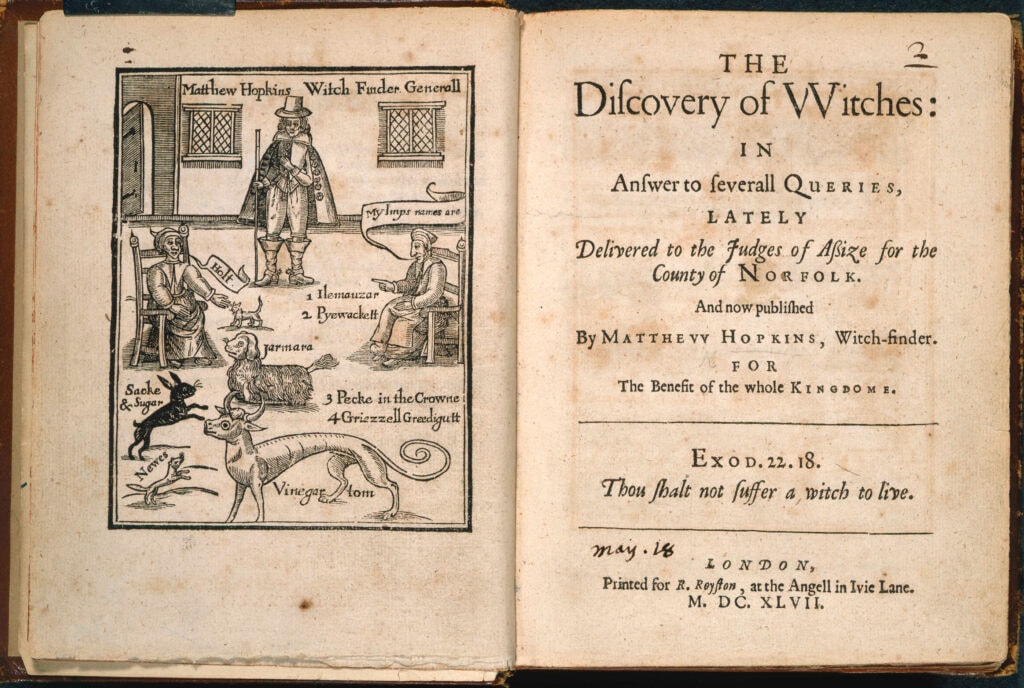
In the early 17th century when King James VI came to power in 1603 after Elizabeth died it was he who changed the Witchcraft Act inspired by the North Berwick witch trials in Scotland in 1590.
Witch trials were most frequent in England in the first half of the 17th-century. They reached their most intense phase during the English civil war of the 1640s and the Puritan era of the 1650s. This was a period of intense witch hunts, known for witch hunters such as Matthew Hopkins.
- Witch Trials in England: 33 Witch Sites to Visit
- History of witchcraft in England
- Famous Witches of England – famous UK witch trials
- Famous witches in England and their trials
- Famous Witch Trials in England
- The Witches of East Anglia
- Famous Witch Trials in England
Famous Witches of England – famous UK witch trials
Although Eleanor and Margery were the first witches noted in the middle ages witchcraft was not considered a criminal offence. It was during the second half of the 16th century that the widescale witchhunts began to take place.
Eleanor, Duchess of Gloucester
Eleanor was an English noblewoman who was mistress to the Duke of Gloucester and then became his second wife. In 1441 he divorced her when she was charged with Witchcraft by King Henry VI.
Immortalised by Shakespeare in his play Henry VI, Eleanor was accused of trying to assassinate the King using witchcraft. Eleanor had consulted astrologers that told her that the King would fall ill and die. These rumours reached the King who had the astrologers questioned and they claimed that Eleanor instigated the necromancy. Before she could be captured and imprisoned Eleanor escaped to Westminster Abbey.
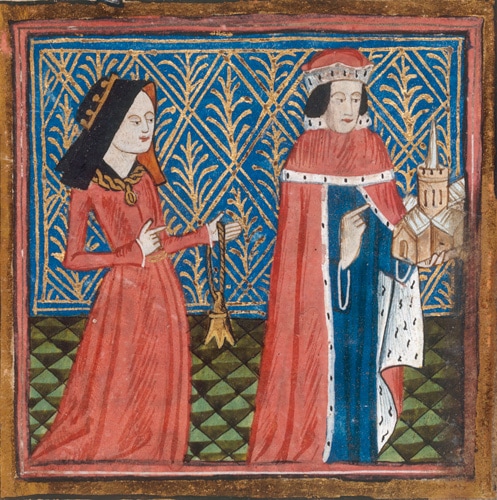
Eleanor was questioned by the religious leaders and confessed she had obtained ‘potions’ to help her conceive. Sadly Eleanor was found guilty, her husband divorced her and she was condemned to life in prison.
In 1442, Eleanor was imprisoned at Chester Castle, and then in 1443, she was moved to Kenilworth Castle. In July 1446 Eleanor was moved to the Isle of Man, and finally in March 1449 to Beaumaris Castle in Anglesey, where she died on 7 July 1452.
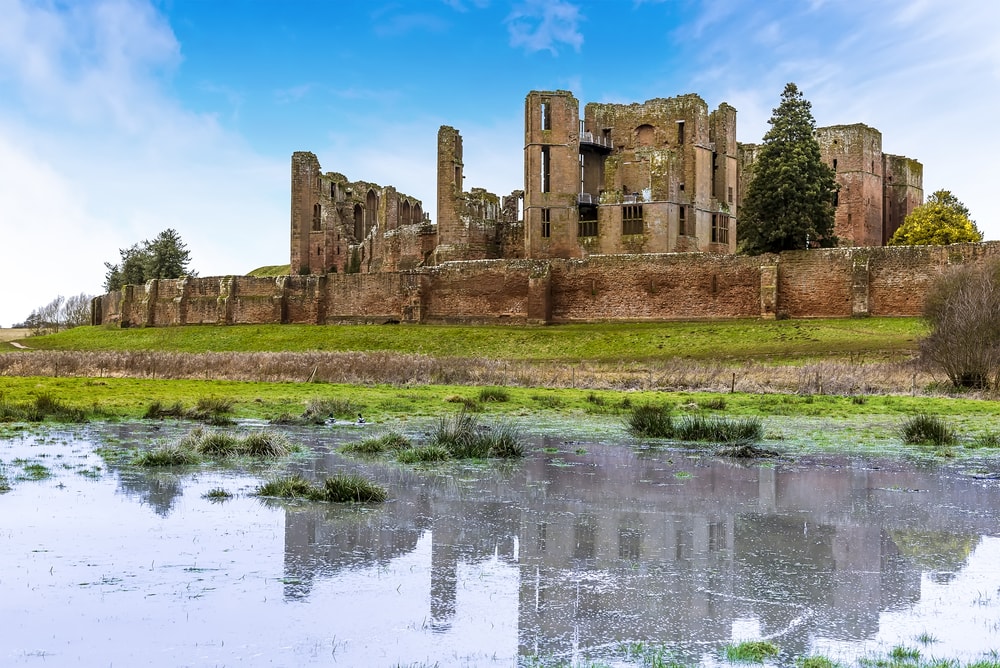
Margery Jourdemayne
When questioned it came about that Margery Jordemayne who was known as the ‘Witch of Eye’ had made the potions for Eleanor. When the astrologers used by Eleanor (Southwell and Bolingbroke) were found guilty of sorcery Bolingbroke was hung, drawn and quartered at the Tower of London and Southwell died in the Tower. Margery was burnt at the stake in Smithfield.
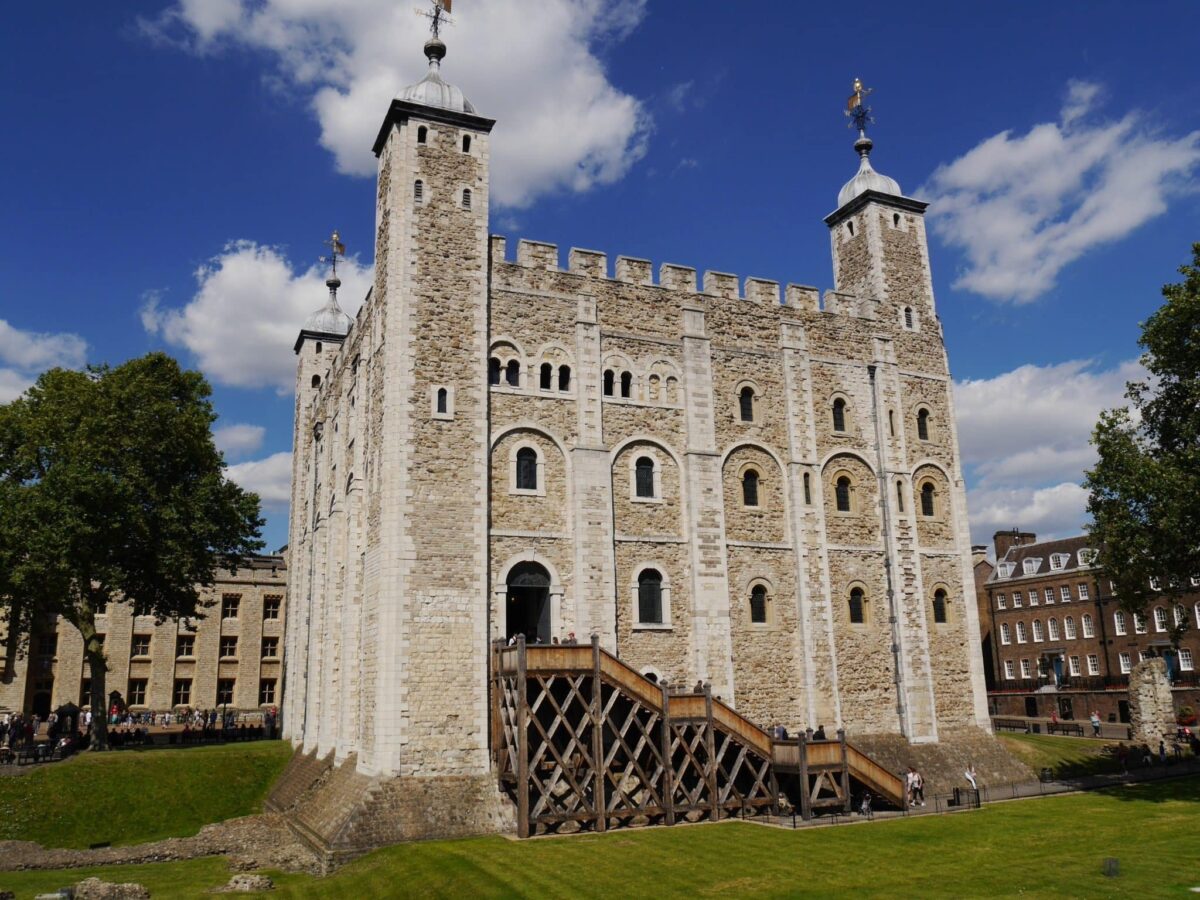
Famous witches in England and their trials
North Berwick Witch Trials – Scotland
These were the infamous Scottish Witch trials that affected the whole of Britain for many years. The Berwick witches were accused of attempting to sabotage King James’ efforts to obtain the throne by capsizing his ship before it reached land.
This was the place of some of the most brutal and horrific Witch Trials ever seen in Scotland. During the reign of King James, somewhere between 70 and 200 ‘witches’ were put on trial, tortured and executed.
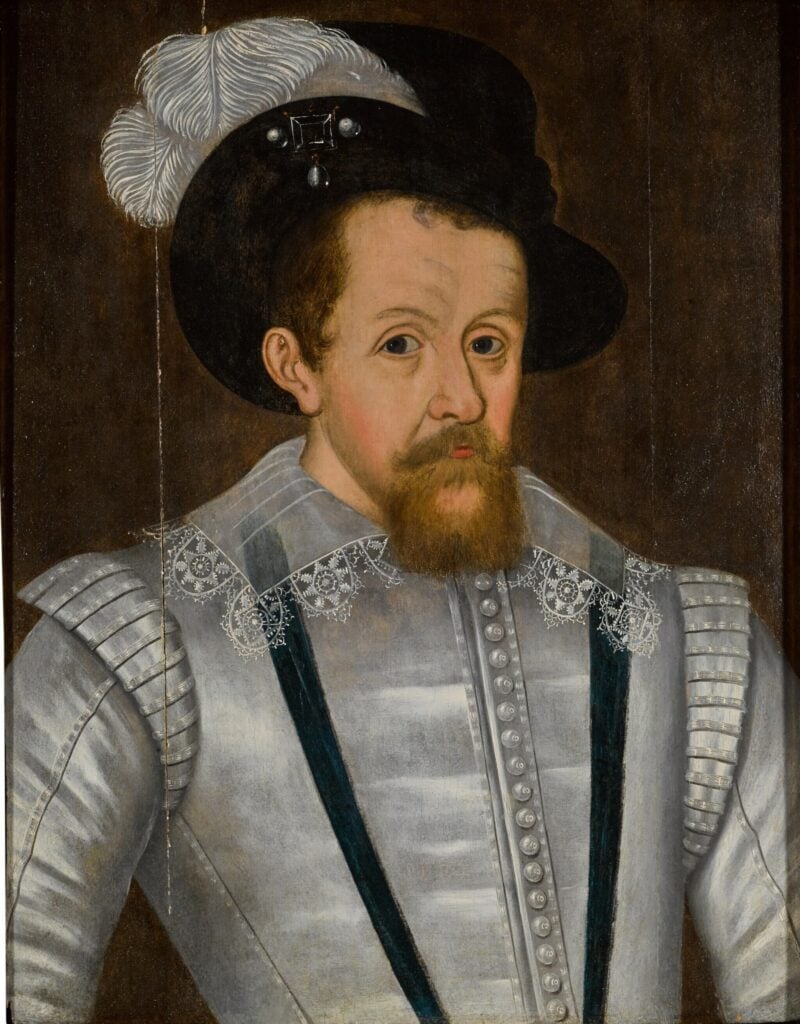
Apparently, James got tired of waiting for his new bride Anne of Denmark to join him in Scotland so he took a ship to fetch her. The crossing was troubled by massive storms and his ships had to turn back. For some reason, James became convinced that witches were intent on ensuring he didn’t marry and produce heirs.
The King’s hatred and obsession with witches became known throughout the land and the witch purges began starting at St. Andrew’s Kirk located on the seafront.
It was said that this was where the witches held their covens and summoned the devil. There are rumours that some of the witches were held and tortured here before being burnt at the stake. The ruins of the Kirk exist today and can be visited at 27 Victoria Rd, North Berwick EH39 4JL, Scotland.
Isabella Billington
The precise details are often lost in the mists of time, or tied up with folklore, but the story goes that Isabella was hanged for witchcraft in York in 1649 after crucifying her own mother in some kind of satanic ritual. One record said that Isabella, 32, “was sentenced to death for crucifying her mother, at Pocklington, on the 5th of January, 1649, and offering a calf and a cockerel as a burnt sacrifice.” You can experience the tale of Isabella Billington at the York Dungeons.
Gilly Duncan
The witch purge began when In 1590 a young servant known as Gilly was arrested for witchcraft she initially denied the allegations but after being tortured supposedly confessed and named many accomplices.
Agnes Sampson
Agnes Sampson was a respected local midwife and healer who was named by Gilly and was examined by King James himself at Holyrood. She was brutally tortured, kept from sleeping and finally confessed to the 53 charges against her. Agnes was finally strangled and burnt at the stake. Gilly was also convicted and burnt on Castle Hill and is one of the 300 witches commemorated by the Witches’ Fountain.
Witches Well – Edinburgh
The Witches’ Well is a monument to the 300 women who were accused of being witches and burned at the stake during the witch trials in Scotland.
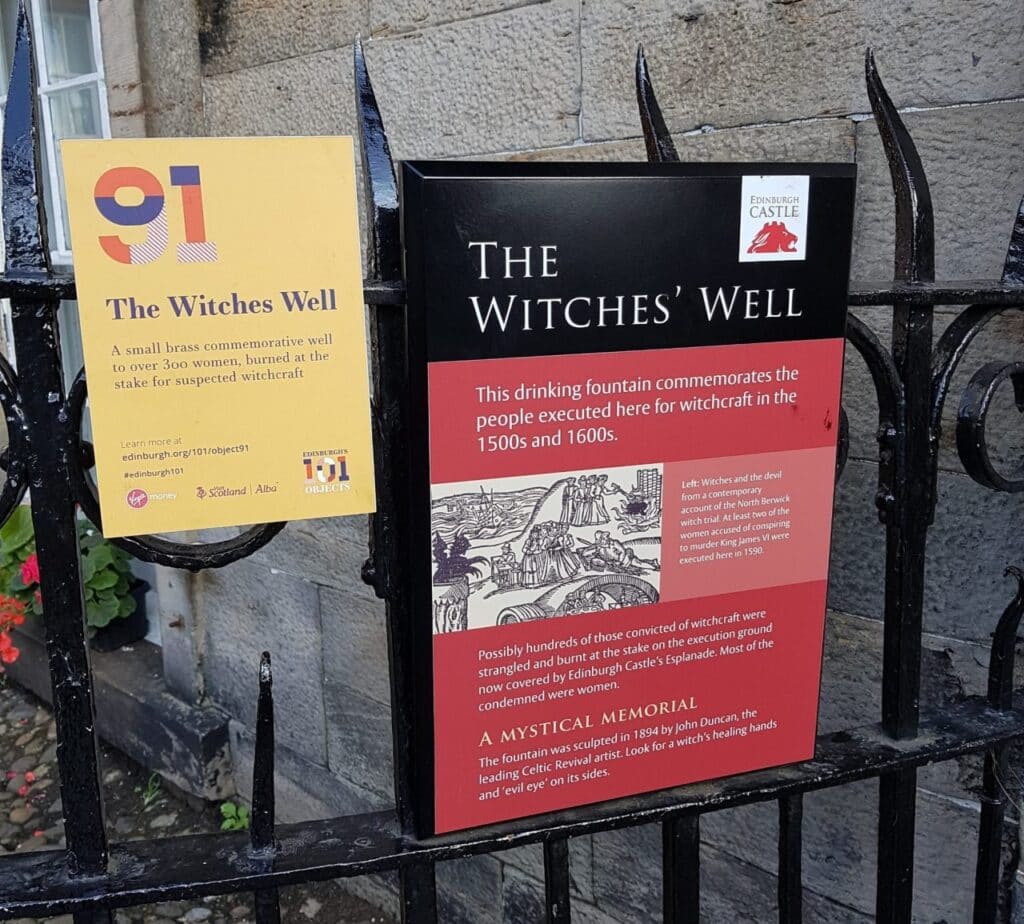
Originally carved from bronze as a water fountain the monument is now dedicated to those who lost their lives during the Witch hunts.
The Witches’ Well or Fountain can be visited in Edinburgh near situated at the entrance to the Castle Esplanade on the west wall of The Tartan Weaving Mill, is easy to miss. Edinburgh EH1 2NA
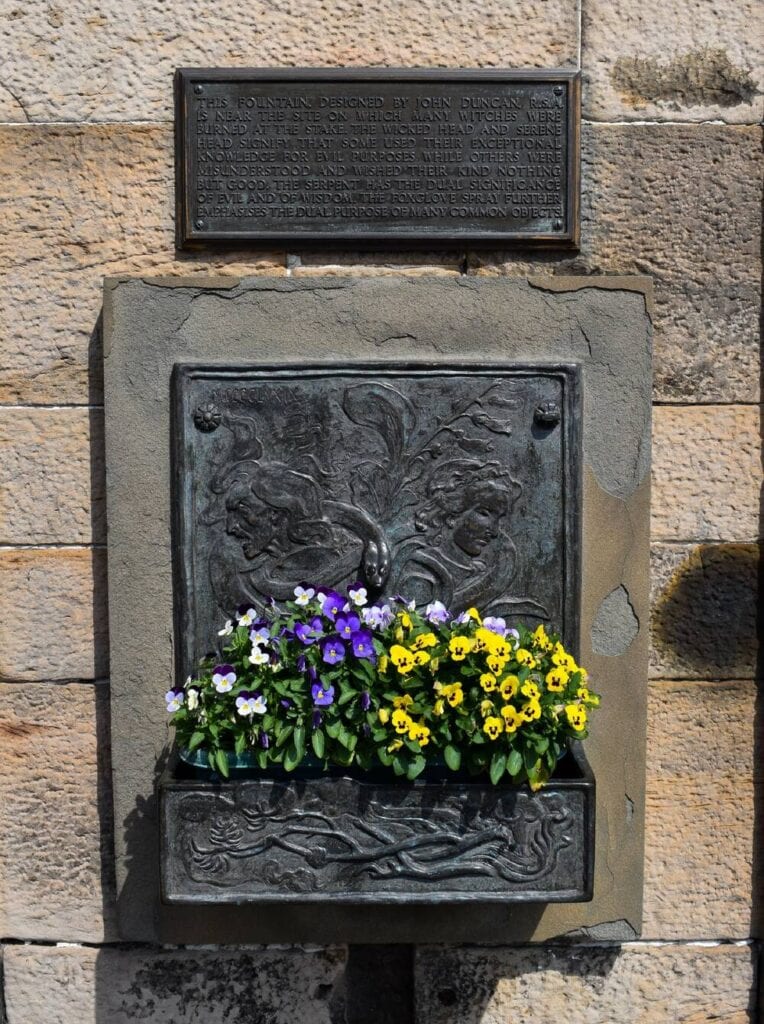
In March 2022 Nicola Sturgeon, the first minister of Scotland, apologized for the persecution of alleged witches during the 16th, 17th, and 18th centuries.
In Scotland, Claire Mitchell QC is leading a growing campaign for those executed as witches – 2,500 in total – to be granted a legal pardon.
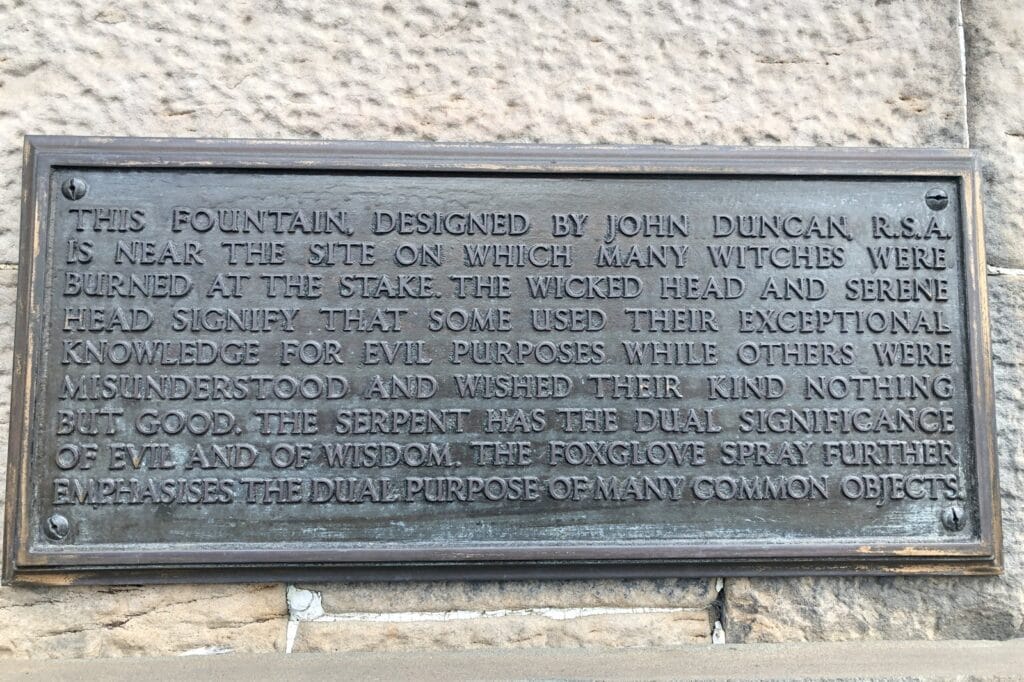
Famous Witch Trials in England
The man who caused the horror of the Witch Trials was King James I who was obsessed with Witchcraft and was a rabid anti-Catholic. The Witch trials in England reached a peak in the mid 17th century and by the time they ended in 1735, it is estimated that up to 1000 people mostly women were executed.
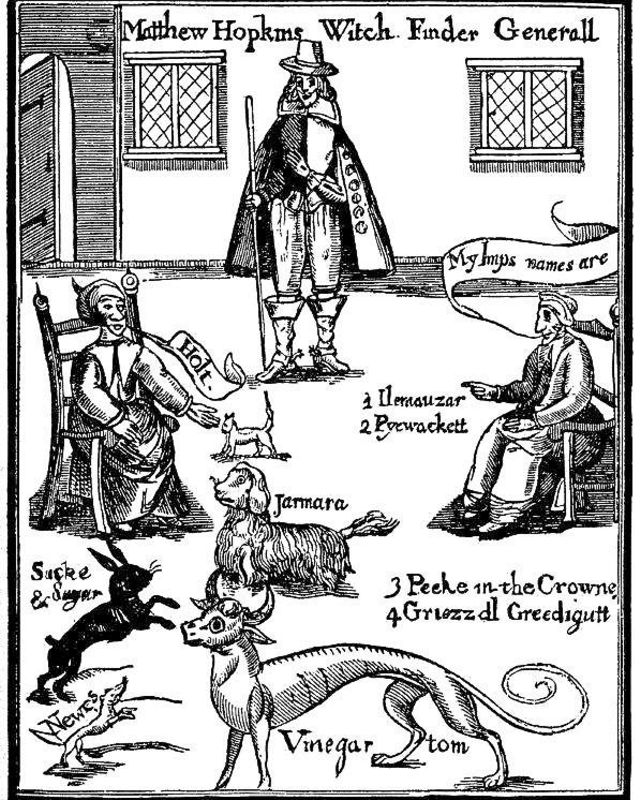
Pendle Witches
The most infamous witch trials in England took place in Pendle Lancashire. In 1612 12 people were said to be witches and they were brought to trial. The accused witches lived in the area around Pendle Hill.
Because Lancashire was so far to the north, and northerners were always trouble due to their clinging to Catholicism the people of the region were considered lawless and wild.

The 12 witches were charged with the murders of 10 people by the use of witchcraft. From the records of and official publication of the trials by Thomas Potts in The Wonderfull Discoverie of Witches in the Countie of Lancaster, we learn that 6 of the Pendle witches came from two families both headed not by men but by wise women in their 80’s.
These days it is believed that both women were earning a living as healers using both herbal cures, charms and talismans. Historians believe that since the accusations of witchcraft came from both families against each other this might have meant that they were in competition to earn a living and so accused the other family to ensure they could earn more.
Early in 1612 Alizon Device was out begging on the road to Colne when she met John Law. According to the Lancaster Castle website, Alizon wanted to obtain pins from Law and when he refused as she had no money she supposedly cursed him and he fell to the ground.
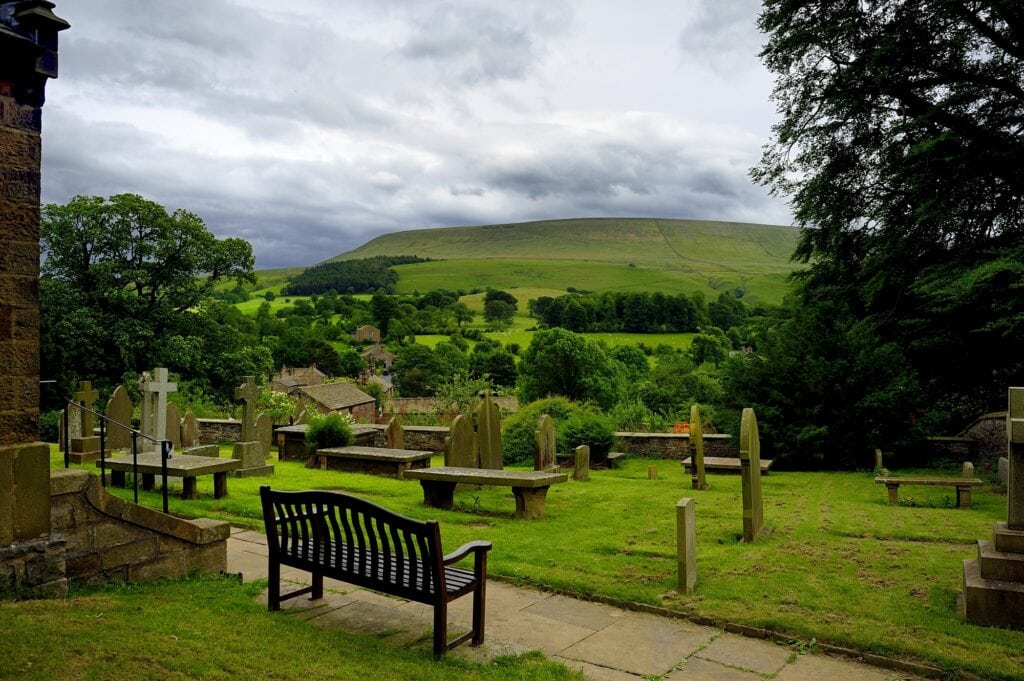
In her confession, Alizon said that her ‘familiar spirit’ had appeared to her asking if she wanted to harm Law. Alizon believed she had caused harm to Law and begged to be forgiven – although these days it would have been considered a stroke Alizon truly felt she had caused the illness.
Law did forgive Alizon but his son took the matter to the Magistrate who interrogated the suspects. By the end of April 19 were arrested and sent to Lancaster Castle to await trial.
The trial took place in August 1612, none of the prisoners was allowed any defence nor could they call on any witnesses to speak for them.
In addition to the ten defendants from Pendle, the Samlesbury Witches – John Ramsden, Elizabeth Astley, Isabel Southgraves, Lawrence Haye, Jane Southworth, Jennet Brierly and Ellen Brierly – along with Isobel Robey from Windle, near St Helens and Margaret Pearson, the Padiham Witch, were also tried.
The evidence provided by the witnesses was of course based on rumours, gossip and lies but the chief witness against the Pendle witches was the granddaughter of ‘old Demdike’ Jennet Device.
By the end of the trials, 10 people were found guilty and sentenced to hang they were: Anne Whittle, Ann Redfearn, Elizabeth Device, Alice Nutter, Alizon Device, James Device, Katherine Hewitt, Jane Bulcock, John Bulcock and Isobel Robey. All that remained was for the sentences to be handed down. Bromley had little option: under the terms of the 1604 Witchcraft Act, all the accused had been found guilty of crimes punishable by death. On August 20th 1612 the ten condemned prisoners were taken to the moors above the town and hanged.
Padiham Witch
Margaret Pearson the Padiham witch accused of riding a horse to death was also found guilty, but not executed. Instead, she was sentenced to be pilloried on four consecutive market days in Padiham, Clitheroe, Whalley and Lancaster, and then to serve one year in prison.
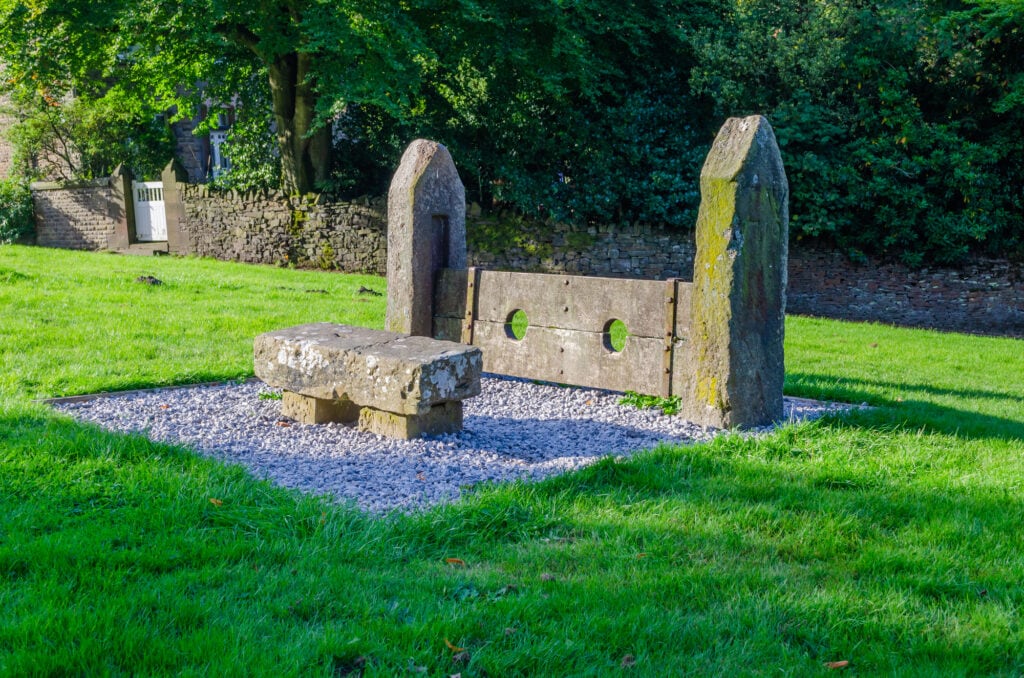
Samlesbury Witches
The Samlesbury witches were accused of practising witchcraft by a teenager Grace Sowerbutts. The three women Jane Southworth, Jennet Bierley, and Ellen Bierley – were accused who was the granddaughter of Jennet and Ellen’s niece. The women were taken to Lancaster Castle and held in the same dungeon as the Pendle Witches.
It turned out however that Grace had been coached by a Catholic Priest and when questioned Grace admitted the tale was made up. Grace was coached by Christopher Southwork a Jesuit priest who was hiding in the area. After the statements had been read out in court Bromley ordered the jury to find the defendants not guilty.
All of the Samlesbury Witches were acquitted, as was Alice Grey. But 20 years later a boy called Edmund Robinson accused Jennet and 16 others of witchcraft. Fortunately the boy Edmund admitted he had lied and all of the witches were acquitted.
Pendle Witches Trail
Lancaster Castle
Lancaster Castle, also known as John O’Gaunt’s Castle, has a bloody history that dates back 1,000 years, the castle has been at the centre of some of Lancashire’s most significant moments of history – including the scene of 200 executions, incidents of religious persecution, and of course, the notorious Lancashire Witch Trials.
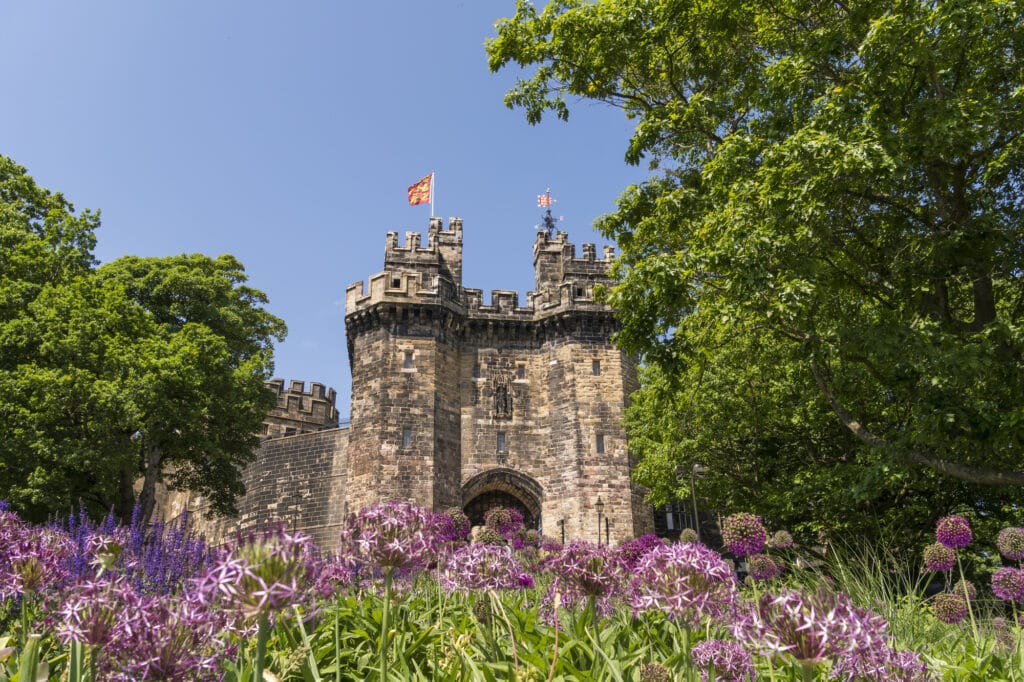
If you want to learn more about the Pendle Witch trial, Lancaster Castle is open 9:30-5 every day. At the castle, you can see a walking exhibition dedicated to the Pendle Witch Story. The exhibition is on the ground floor of the medieval well Tower that was known as the Witches Tower.
Directly below this room is a cell which supposedly held the accused for the three months before their trial.
Trail of the Pendle Witches
This is a self guided car, minibus or bike trail of 45 miles. You can start either in Lancaster or Pendle and will follow the directions on the leaflet to the other end of the trail.
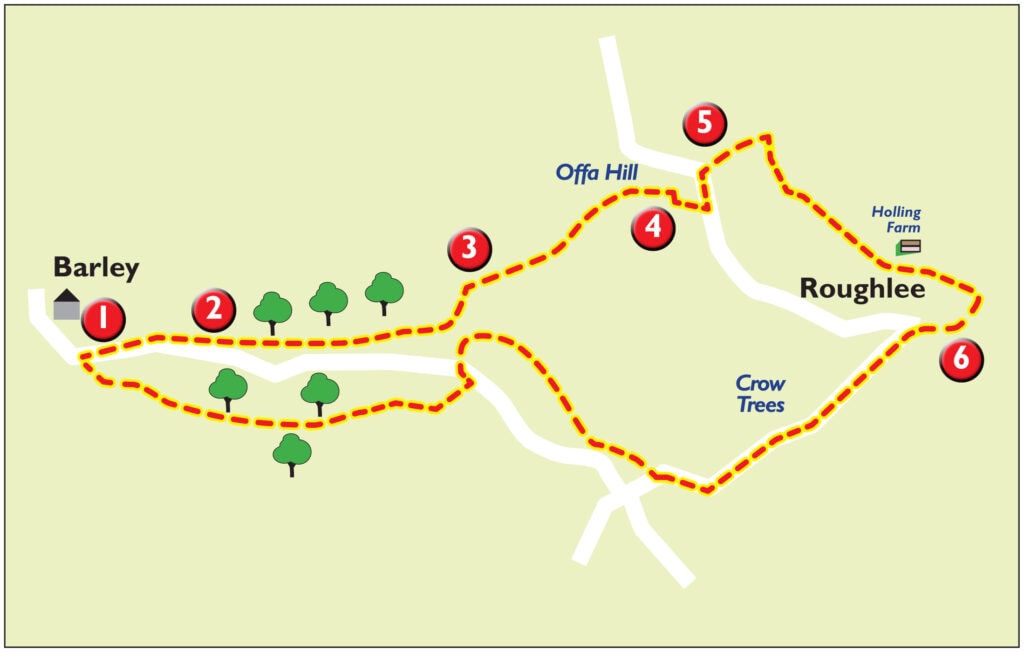
Pendle Hill Walk
Once home to ancient hunts above the Forest of Bowland rises Pendle Hill.
Where does the Pendle Hill walk start? This walk climbs to the summit of Pendle Hill in Lancashire. It starts in the village of Barley and makes use of the Pendle Way long distance footpath to take you on a circular tour of the area.
From Pendle Hill, you can see the small farms and hamlets that played their parts in the Pendle Hill witches’ story. The views over the English countryside are simply stunning.
Malkin Tower
Malkin Tower is the suspected location of the Pendle Witches’ coven. It was also known as Demdike Coven, named after Alizon’s grandmother. In 2011 engineers uncovered a 17th-century cottage complete with a cat skeleton during construction work in Lancashire.
It was discovered near Lower Black Moss reservoir in the village of Barley, in the shadow of Pendle Hill. Historians are now speculating that the well-preserved cottage could have belonged to one of the Pendle witches. The building contained a sealed room, with the bones of a cat bricked into the wall.
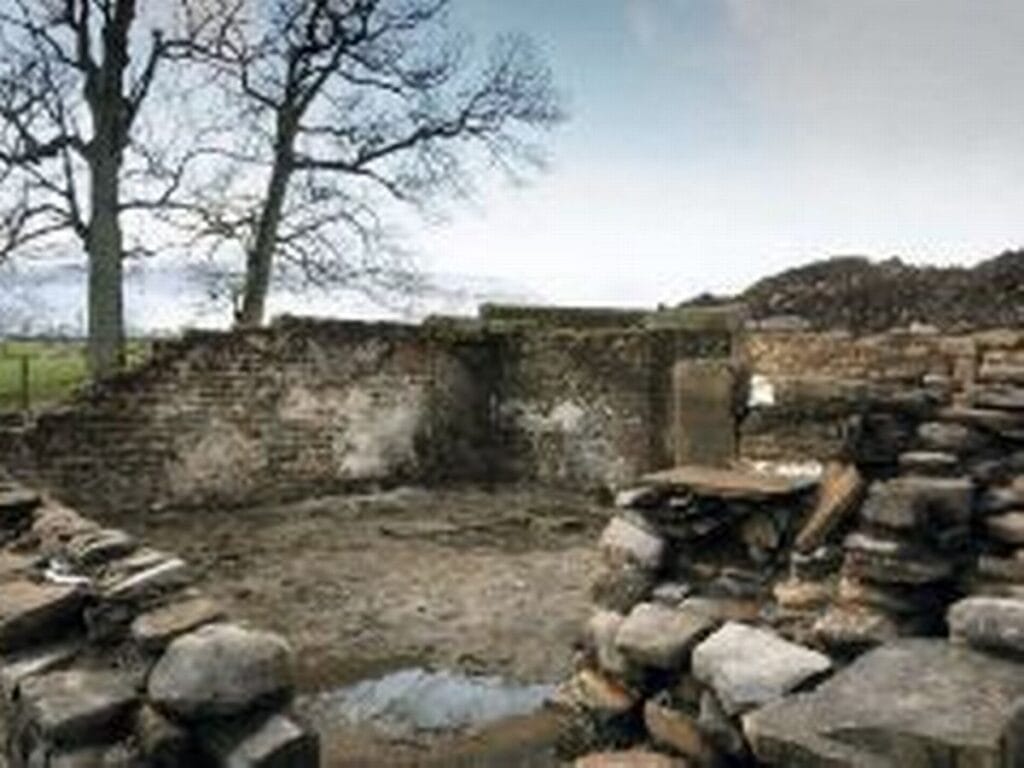
Gallows Hill
Gallows Hill, in Williamson Park near the Ashton Memorial, is where the Pendle witches suffered their terrible execution. Executions in Lancaster took place here on the moors, known as Gallows Hill, until 1800.
Nine out of the ten Pendle Witches were hung there in 1612 – with the other being dealt with in York. The Ashton Memorial at Willamson Park now stands on what was once known as Gallows Hill and some people claim the building is haunted by those who were hanged.
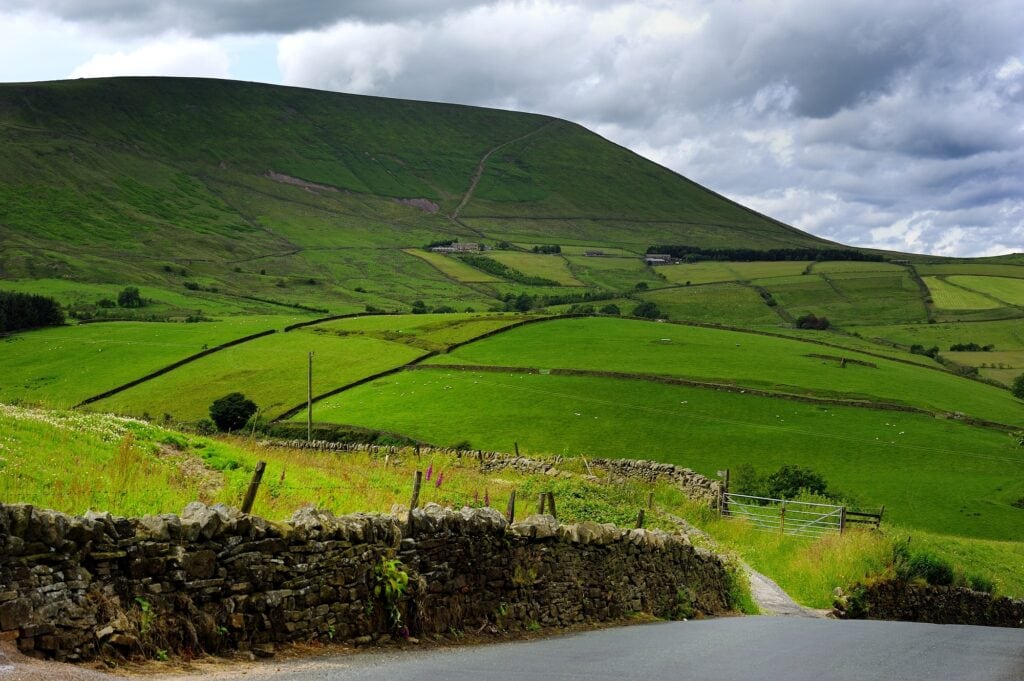
Roughlee – Nelson, Lancashire Alice Nutter Statue
Alice Nutter was accused of witchcraft and executed for crimes she did not commit. A Catholic woman in a Puritan world, Alice was simply in the wrong place at the wrong time. There’s a metal statue in Roughlee which commemorates her life.
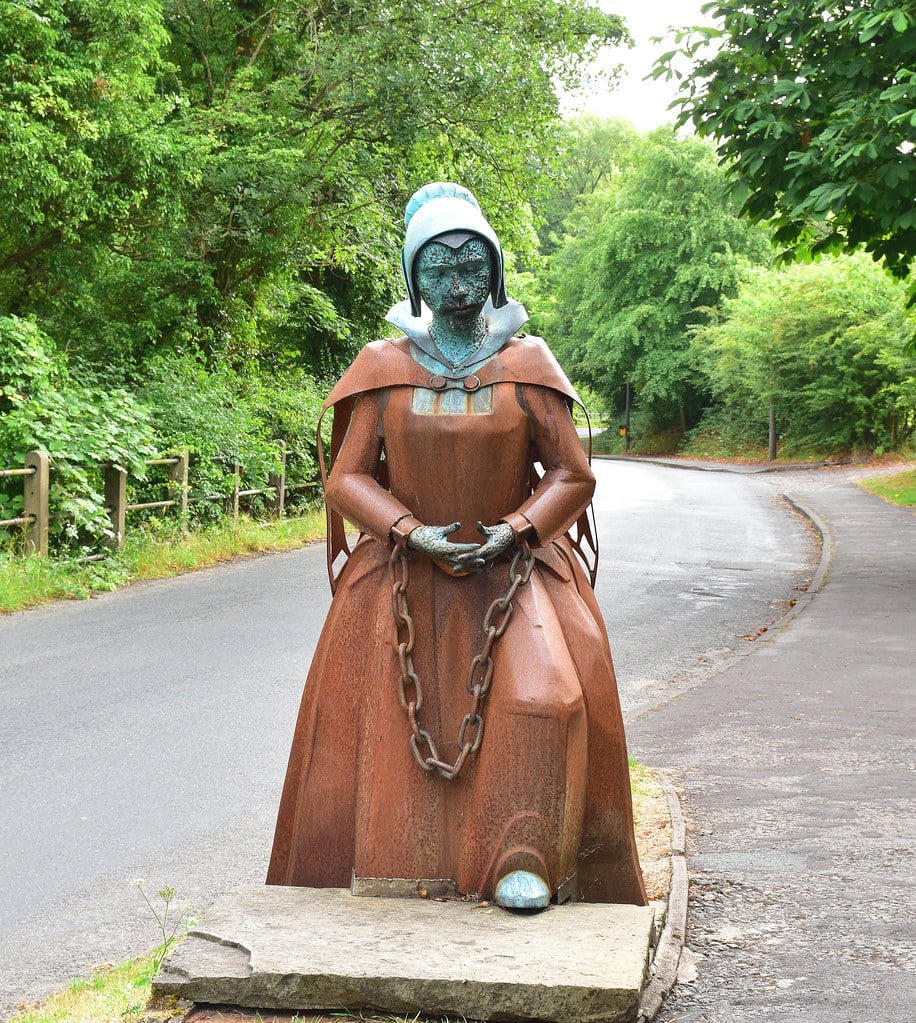
Walking with Witches Trail
Lancashire has put together a really great walking tour allowing you to follow the journey the Pendle witches took in 1612. Be sure to put on your walking boots and follow one, or both, of the trails to discover several witch sites to visit in England.
The 4-mile Western Loop starts at the Barley car park and offers incredible views of Pendle Hill. The 3.5-mile Eastern Loop also starts at the Barley car park, but heads east towards Roughlee Hall. Find more information and a trail map here: Pendle Witches Trail
Pendle Witch Experience
The three-hour Pendle Witch Experience Tour takes you to all the most important sites around Pendle Hill while captivating you with historic tales of the witch trials. More information: Pendle Witch Experience
Boscastle Witches – The Museum of Witchcraft and Magic
Boscastle is found on the wild coast of Cornwall in a designated “Area of Outstanding Natural Beauty” that’s home to one of the most haunted hotels in the United Kingdom and the world’s largest collection of witchcraft and occult-related items. Just five miles northeast of Tintagel, the castle of Arthurian legend, and nestled within a natural inlet you have come to the witchiest place in England.
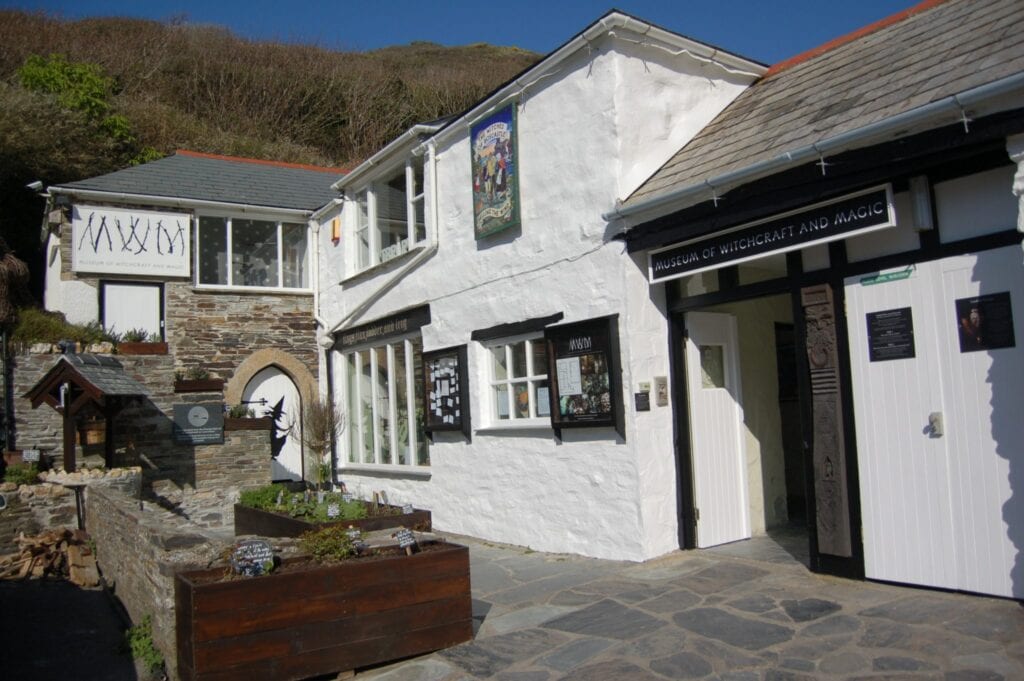
Visit the Museum of Witchcraft and Magic contains over 7000 books and 3000 objects on witchcraft, even the curator is a practising witch.
The museum was initially founded in Stratford-upon-Avon but after local opposition, moved to the Isle of Man and in 1951 and Gerald Gardner, the founder of modern Wicca, was featured as the ‘resident witch.’ Eventually, the Museum moved again and was settled in the Cornish village of Boscastle and opened in 1960.
Joan Wytte the Wytte Witch of Bodmin
Joan Wytte was famous as a clairvoyant and healer during the 1700s and was born in Bodmin. Later in life, Joan apparently became very ill-tempered due to a bad tooth and she would often get involved in fights. She was eventually sent to prison in Bodmin Jail – not for being a witch but for ‘public brawling’. Sadly Joan died in prison at the age of 38.
The remains of Joan Wytte, the ‘Fighting Fairy Woman’ or the ‘Wytte Witch’ were displayed for over 30 years in the Museum. It was said that Joan’s spirit became disruptive as she wished to be buried properly and in 1998 she was finally laid to rest and a memorial stone was erected. The stone has now become a pilgrimage destination for today’s Wiccan practitioners. her gravestone reads: “Joan Wytte. Born 1775. Died 1813 in Bodmin Jail. Buried 1998. No longer abused”
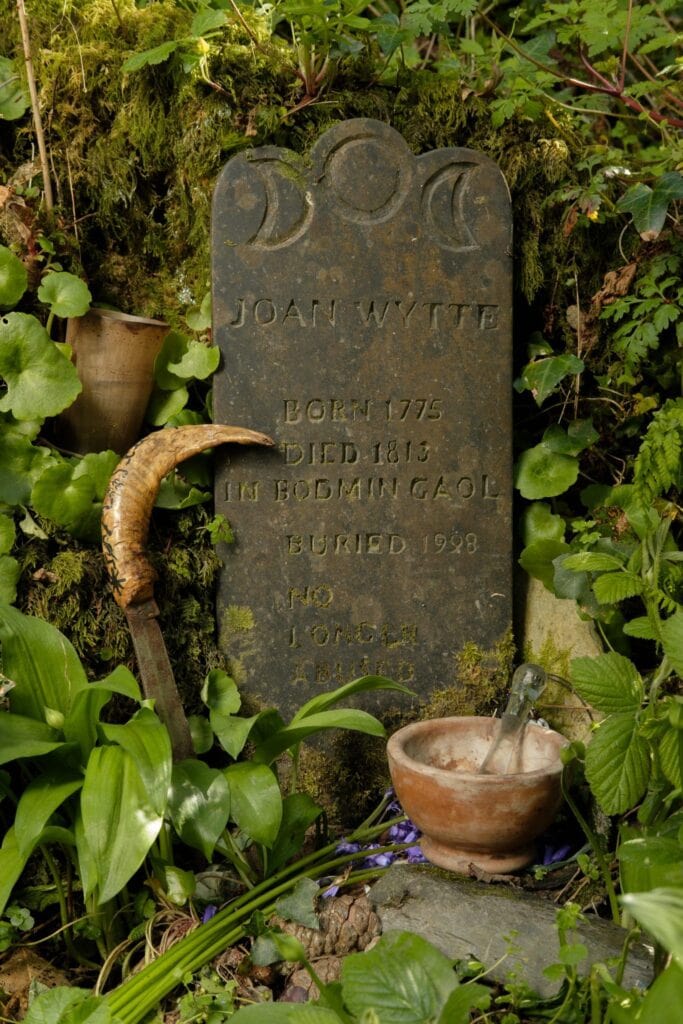
Sybil Leek the White Witch of Burley, New Forest
Sybil Leek was the famous witch or Druid as she called herself from Burley in the New Forest. Sybil was a self-proclaimed white witch and she lectured widely on the mystical and supernatural. Sybil used to say that her family had been involved in witchcraft since 1134 she said she was a Druid, not a mere witch. ”Witches are the working class,” she said. ”The Druids are the priests.”
Burley is known locally as the Village of Witches thanks to Sybil who wandered the village in her cloak with a jackdaw on her shoulder. Before she emigrated to the US where she became Leek named one of Burley’s witchcraft shops A Coven of Witches and it can still be found in the main road in and out of town.
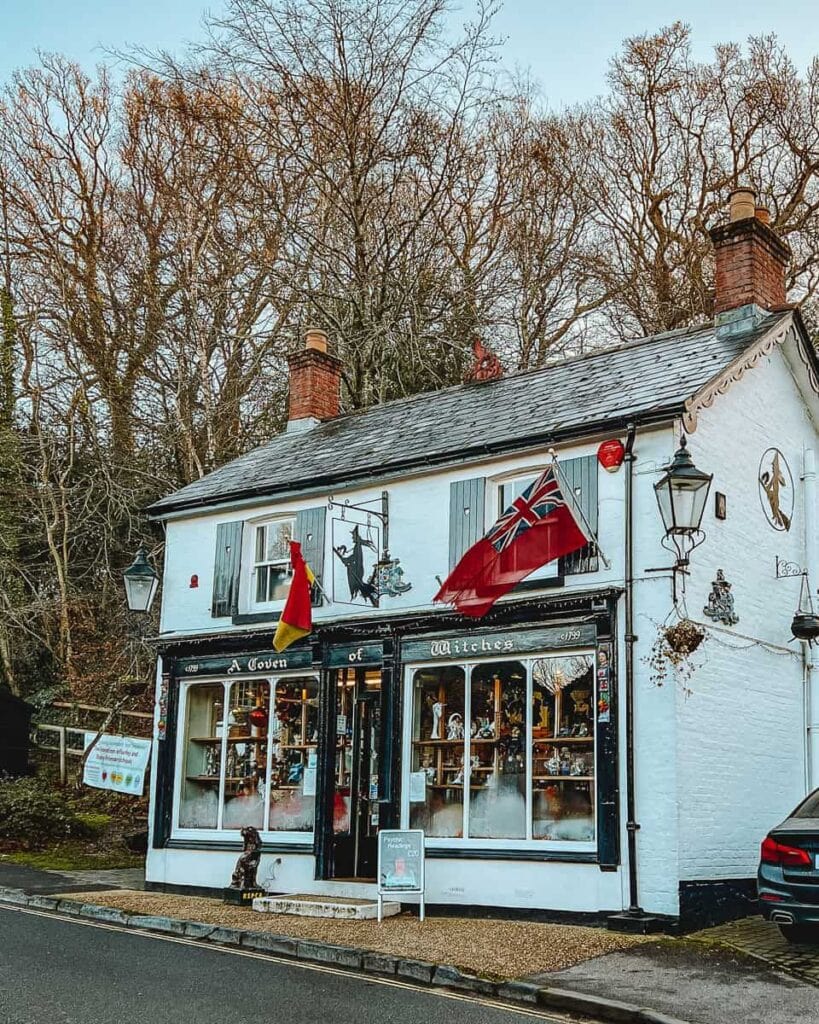
Rollright Stones Witches
The Rollright Stones have stood guard in the Cotswolds for thousands of years. The Rollright Stones are right on the border of Warwickshire and Oxfordshire a few miles from Chipping Norton. They sit on the steep ridge at the edge of the Cotswolds.
The Stones are three megalithic monuments known as the King’s Men, King Stone and the Whispering Knights. According to legends King Rollandri (Roland the Brave) was on a mission to conquer England and met a witch on a windswept hill above the village of Long Compton. She told him:
If Long Compton thou canst no see
King of England thous shalt not be
Thou and they men hoar stones shat be
And I shall be an elder tree.
Right then the king and his men were turned to stone. The monarch stands all alone (the King Stone) ahead of his resting army (across the road), while his knight’s mutter in each others’ ears (the chamber).
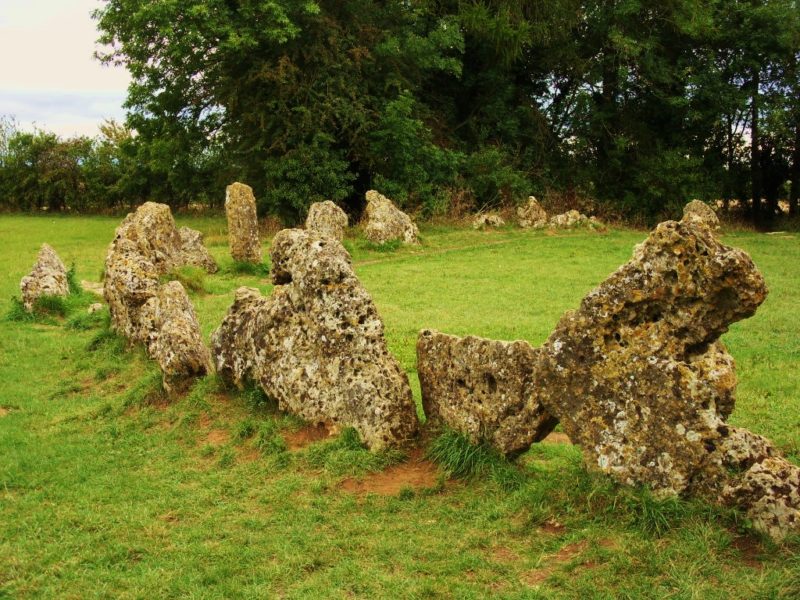
Mother Shipton’s Cave, Knaresborough Yorkshire
Mother Shipton is believed to have been a witch and an oracle, predicting days of reckoning and tragedies that were to befall the Tudor reign. Some of her predictions for the future were amazingly accurate as she prophesied the invention of iron ships and the destruction of London. Mother Shipton’s Cave in Knaresborough and a nearby ‘petrifying well’ are among the country’s oldest visitor attractions.
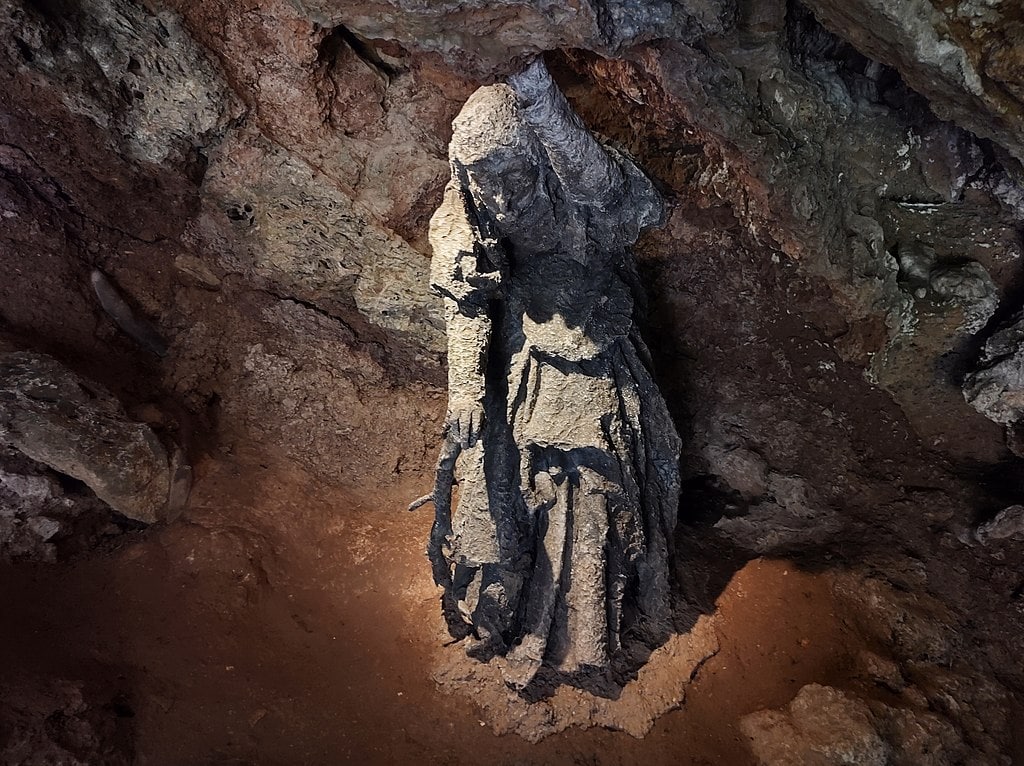
The Witches of East Anglia
The counties of Norfolk, Suffolk and Cambridgeshire and Essex were considered to be the area of East Anglia.
The Witchfinder General
East Anglia was home to the notorious Witchfinder General Matthew Hopkins the man responsible for English witch hunts who sought out easy targets for accusations of Witchcraft and made himself rich in the process. Hopkins was responsible for over 300 trials and the execution of more than 100 so-called witches. Hopkins wrote a pamphlet called “The Discovery of Witches” which detailed his witch-hunting methods.
Hopkins was paid by each town he visited and in Stowmarket, Suffolk it is recorded that he earned over £3,300 in today’s money. The more witches he found and had executed after a staged trial the richer he grew.
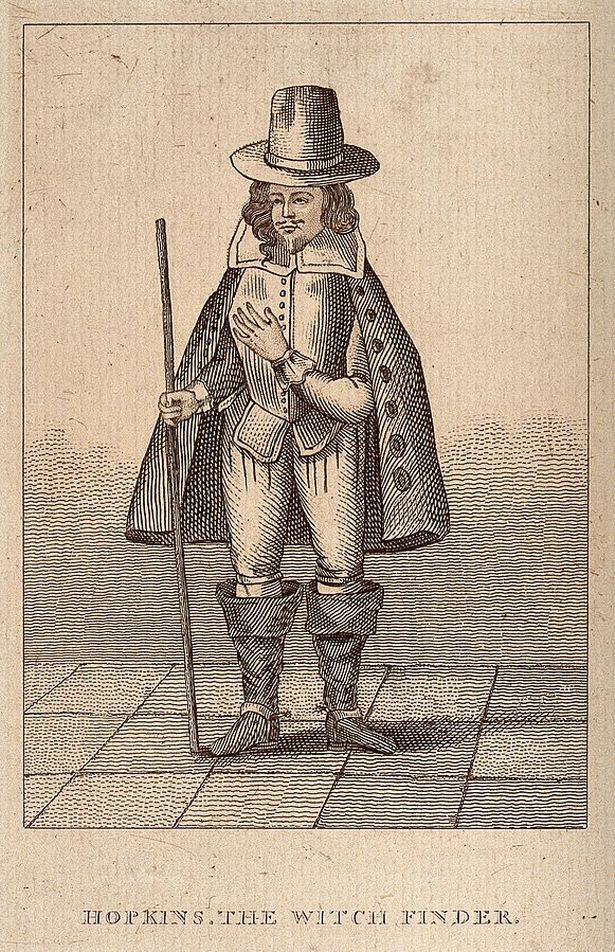
Bury St. Edmunds Witch Trials – Suffolk County
The first recorded account of a witch trial at Bury St Edmunds was in 1599 when Jone Jordan of Shadbrook and Joane Nayler were tried, but there is no record of the charges or verdicts. In the same year, Oliffe Bartham of Shadbrook was executed for “sending three toads to destroy the rest of Joan Jordan”.
It is thought that the trials were probably held at the site of the new Shire Hall in Raingate Street near the Great Churchyard now the town’s Premier Inn.
In 1662, two elderly widows, Rose Cullender and Amy Denny (or Deny or Duny), both living in the nearby town of Lowestoft were accused of witchcraft by their neighbours.
They were tried on 10 March 1662 at the Assizes at Bury St. Edmunds by one of England’s most eminent judges of the time, the Lord Chief Baron of the Exchequer, Sir Matthew Hale, and the jury found them guilty on thirteen charges of using malevolent witchcraft.
They were sentenced to death and were hanged a week later at Thingoe Hill on March 17 1662. The case became a model for and was specifically referenced in, the Salem Witch Trials in Massachusetts.
The executions were held on the unconsecrated ground outside of the town at Southgate, Thingoe Hill and to the west at Tut Hill near to the Bury St Edmunds Golf Club.
In 1645, 16 women (Anne Alderman, Rebecca Morris, Mary Bacon, Mary Clowes, Sarah Spindler, Jane Linstead, Mary Everard, Mary Fuller, Susan Manners, Jane Rivet, Mary Skipper, Mary Smith, Margery Sparham, Katherine Tooly, Anne Leech and Anne Wright) and 2 men (Thomas Everard and John Lowes, the Vicar of Brandeston) were found guilty of witchcraft, all of them were from villages in the surrounding area.
Accused Witches were taken to a building where The Nutshell pub is today and had their nails cut or locks of hair. The nails and hair were stored in brown jars in the basement according to superstition it was thought that if you were not whole when you died, you wouldn’t be able to come back as a witch in the next life.
The last witch trial at Bury St. Edmunds was in 1694 when Lord Chief Justice Sir John Holt forced the acquittal of Mother Munnings of Hartis on charges of predictions causing death. The chief charge was 17 years old, and the second was brought by a man on his way home from an alehouse.
Moyse’s Hall
Steeped in history, Moyse’s Hall has looked out over Bury St Edmunds marketplace for almost 900 years.
Situated in a beautiful medieval building, the Museum houses eclectic collections and exhibitions. Today the museum offers a fascinating view into the past with collections that document the foundation of the early town – from the creation and dissolution of the abbey to prison paraphernalia and artefacts providing intriguing insights into superstition and witchcraft.
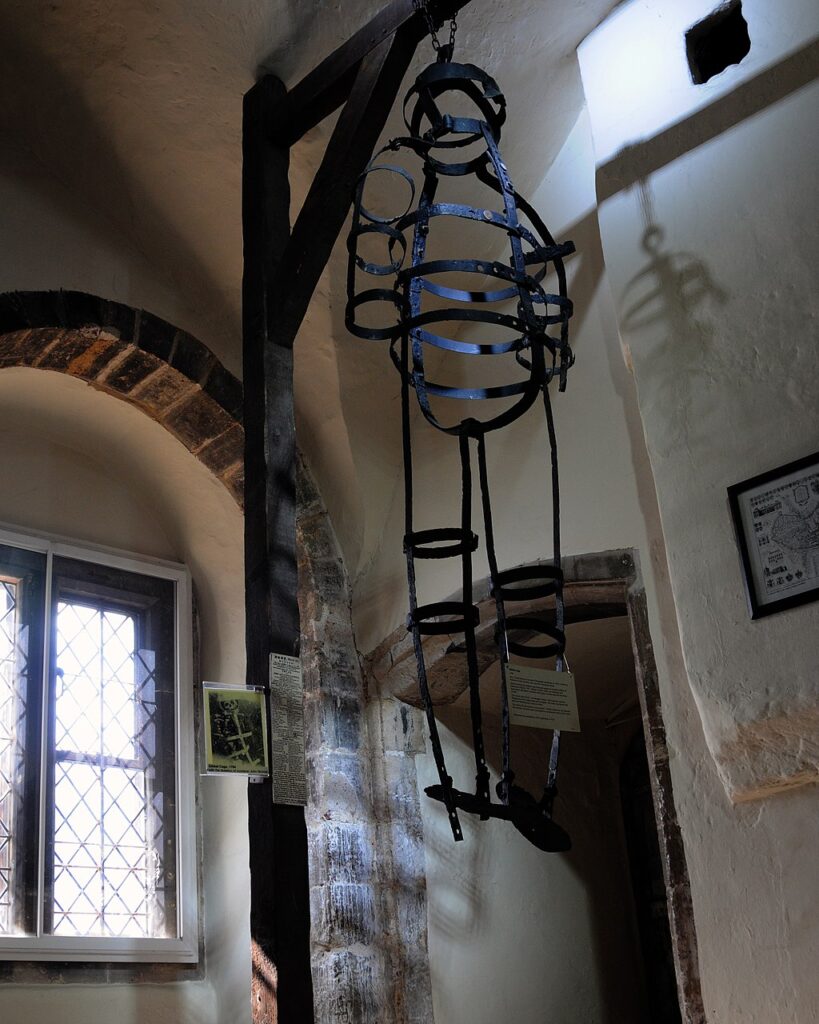
Framlingham Castle
At Framlingham Castle, Hopkins couldn’t get a confession from 80-year-old Reverend John Lowes so he had him dunked in the moat, accused of working with the devil. If not a witch, the accused would drown. Lowes floated and proved his ‘guilt.’
Being dunked and in despair, the Reverend ‘confessed’ but despite his admission, the Reverend never turned his back on God and never admitted to working with the devil. After conducting his own funeral service at All Saints church in Brandeston, Suffolk, he was hanged.
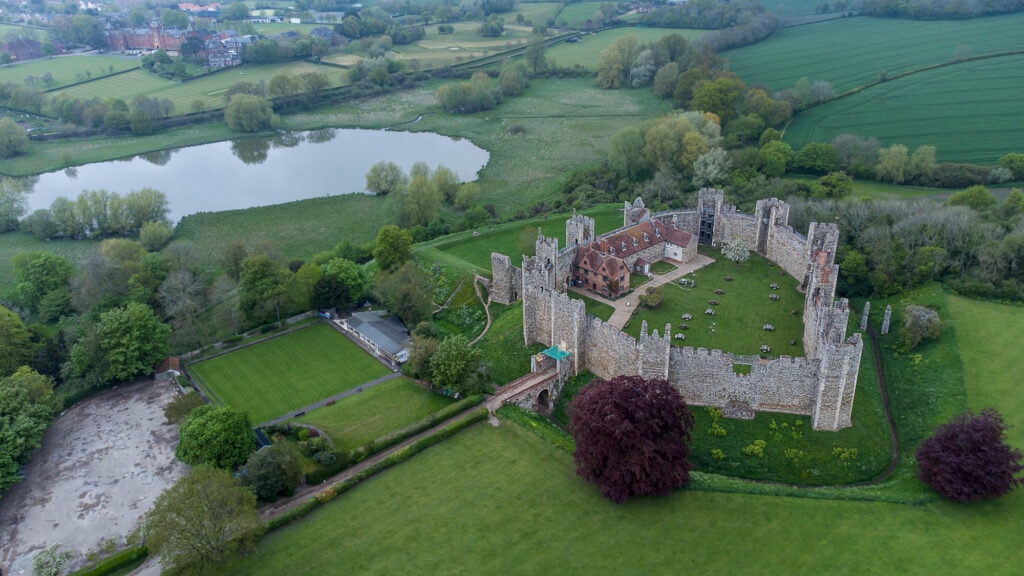
Famous Witch Trials in England
There are a few sites in Essex, Norfolk, and Sussex for those interested in following the English witch trials.
The Mistley Thorn Hotel
The Mistley Thorn Hotel is where Matthew Hopkins lived and worked during his time as Witchfinder General. The Mistley Thorn Hotel dates from 1723 and was originally a coaching house and is said to be haunted by the spirit of the Witch Finder General, Matthew Hopkins, who was buried in Mistley on 12th August 1647.
The current building is far too new to have been used by Hopkins it is the location of the Inn that stood in his time and is historically the place he began his English witch hunts from.
Colchester Castle – Essex
Many of the accused witches were tortured by the Witchfinder General in the prison cells at the Norman Castle of Colchester. The witches were shackled in an overcrowded cell with no windows. You can tour the cells to see where the witches were held until the day of their trial. Colchester Castle recently unveiled a plaque in memory of the witch trials’ victims imprisoned there.
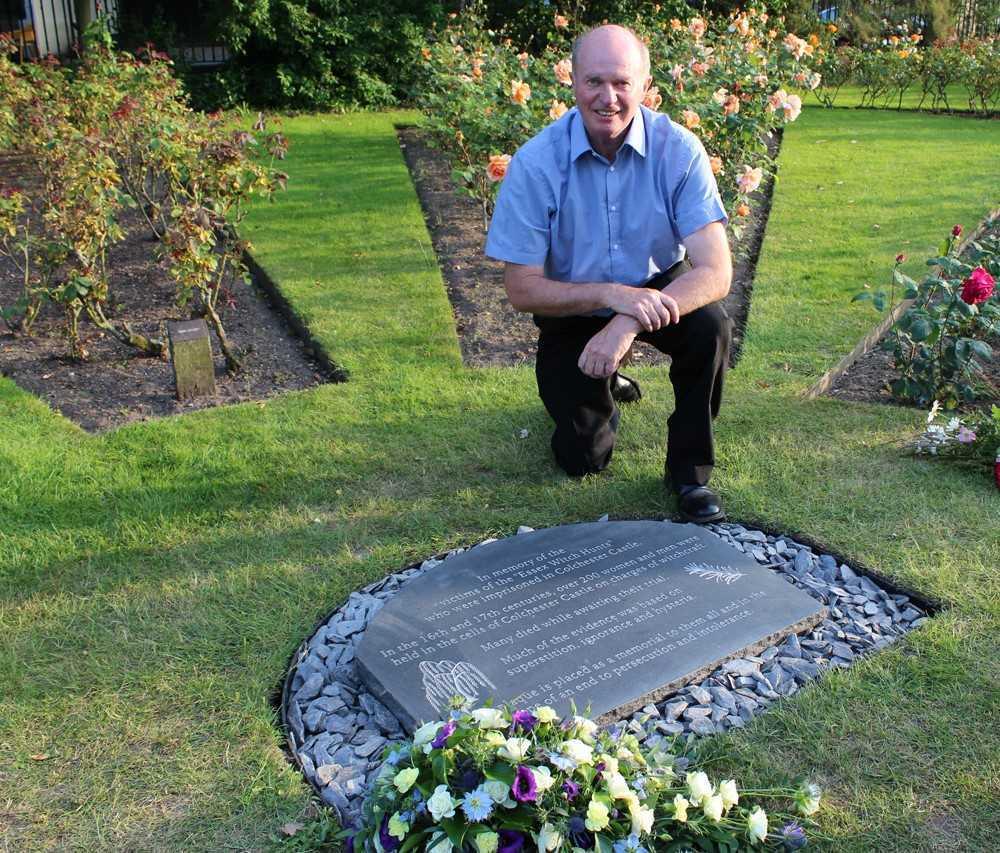
Market Place, King’s Lynn Norfolk
For many years during the 16th century, the marketplace in King’s Lynn was the scene of public executions of alleged witches. The most famous execution was of Margaret Read, who was found guilty of witchcraft in 1590 and burned alive. Legend has it that whilst being consumed by flames, Margaret’s heart jumped from her body and hit the wall opposite, leaving a permanent burn on the brick, which is still marked today.
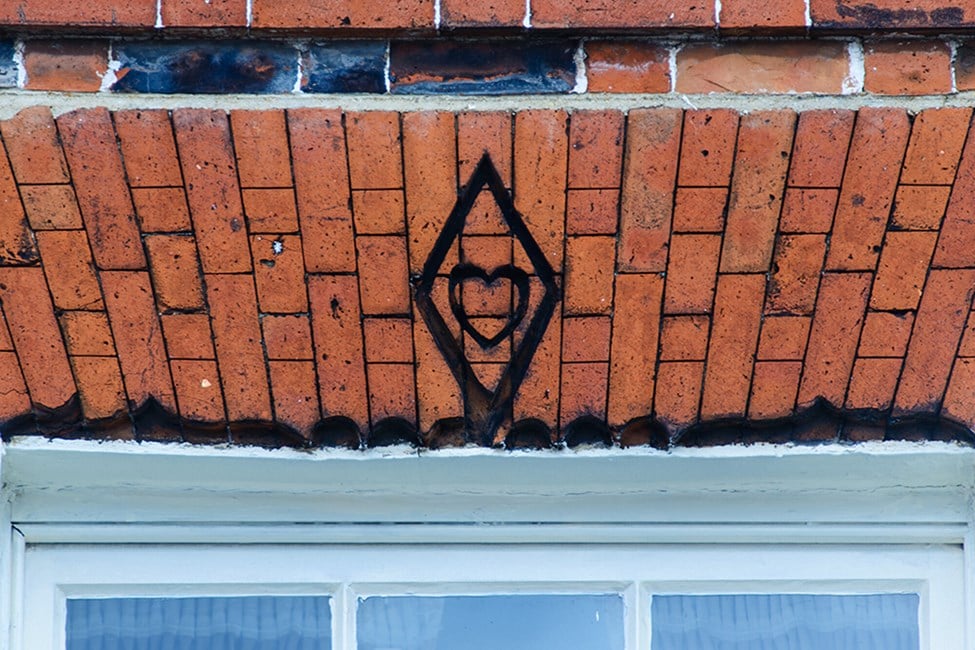
Chelmsford, Essex
One of the most infamous sites associated with the witchcraft trials. Chelmsford is known for its cathedral and Hylands House, but many residents are unaware that the area in front of Shire Hall was where the first ‘witches’ were convicted in a secular court.
Four pamphlets were published from 1566 to 1589 and records of Matthew Hopkins’ 1645 witch hunts documented around 29 ‘witches’ hanged at Chelmsford’s Primrose Hill gallows out of the 65 accused.
Elizabeth Lowys, the Great Waltham ‘witch’, was convicted of bewitching a baby to death in 1564 and hanged in 1565. Chelmsford, however, turned the Primrose Hill gallows site into a residential area, tore down the assizes’ courthouse in front of today’s Shire Hall, and likely replaced the undocumented homes of ‘witches’. The Chelmsford Museum’s small witch exhibit is the only physical reminder.
St. Nicholas Church – Canewdon Essex
The Parish Church of St Nicholas in Canewdon dates from the 14th century and according to tradition and local legends is associated with witches, the devil and ghosts. Legend has it that if you walk around it seven times on Halloween you’ll see a witch.
Many of these ghosts are believed to be the spirits of supposed witches who wander the earth unable to rest due to injustices committed against them when they were alive.
Another legend tells the story of the six witches of Canewdon will live in the village while the tower of the Parish Church stands.
A famous English Witch George Pickingill who was born in 1816 and died in 1909 was said to be the head of a hereditary Witches Coven and the founder of nine other covens in the area. Pickingill is buried at the Parish Church of St Nicholas.
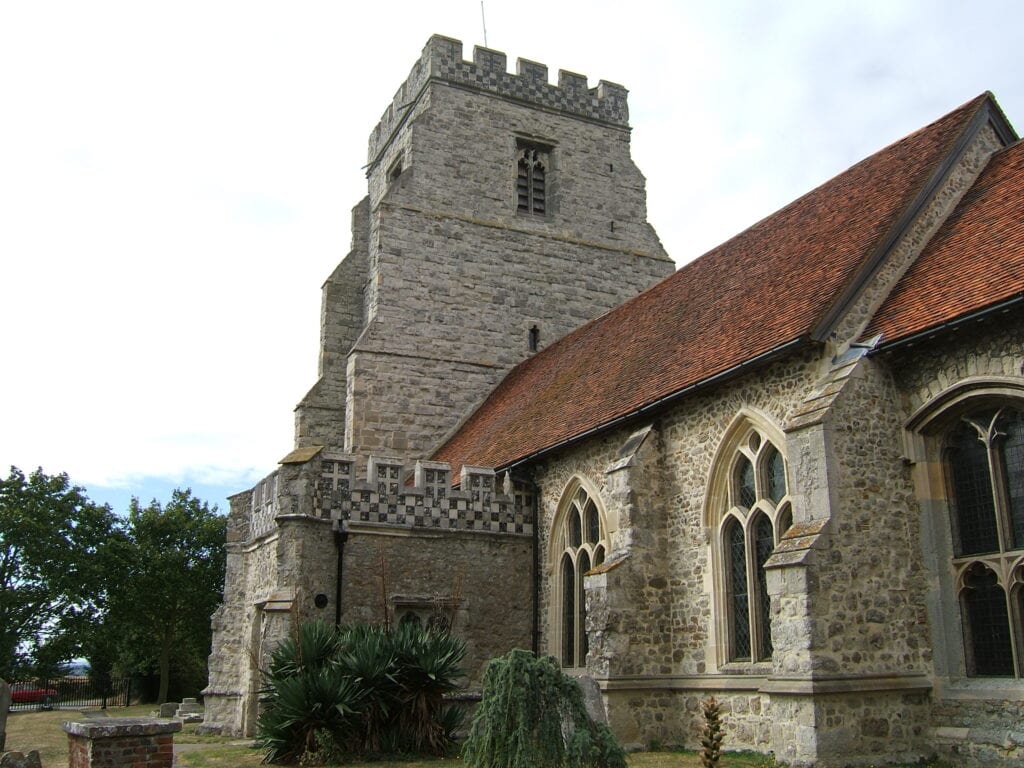
Witches of St. Osyth – Essex
In 1582 fourteen women from St Osyth were put on trial in Chelmsford accused of witchcraft. The first to be accused was Ursula Kempe. Ursula was a poor woman who struggled to make a living as a nursemaid and midwife.
Ursula had cured young Davy Thurlowe of illness, but she was annoyed when his mother, Grace, refused to use her as her new daughter’s nursemaid. Later Grace’s daughter fell out of bed and broke her neck and suspicion fell upon Ursula.
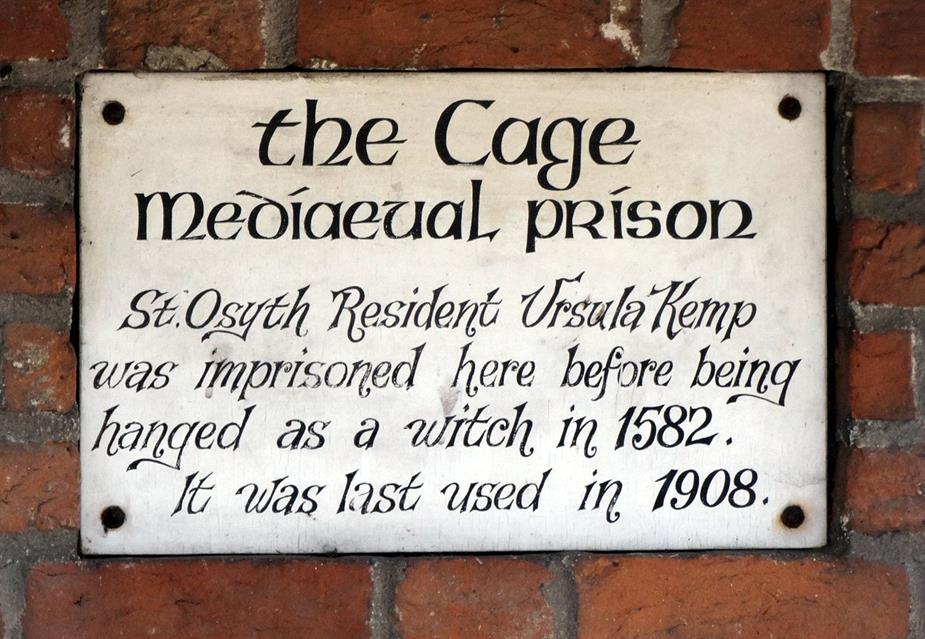
Several skeletons found many years later were seen to be bound by iron rivets driven through their knees and elbows. Historians believe this was the manner in which witches had to be buried in the middle ages.
A historian said that “Two skeletons were found and there are at least ten possibilities – five who died at Chelmsford before witchcraft trials, as well as three women who were tried as witches in 1645.
Working closely with St Osyth Parish Council, a plot with a north-south orientation was located in unconsecrated land and on April 15th with both Pagan and Christian representatives present, the skeleton of ‘Ursula’ was finally laid to rest as a poignant and symbolic gesture for her and her fellow accused.
Long Meg and Her Daughters – Cumbria
Long Meg is actually a stone circle and ‘Meg’ was a local witch who was alive during the 1600s, and legend states that if you walk around the circle and count all of the stones correctly, and then put your ear to the largest stone called “Long Meg”, you will hear her whisper to you.
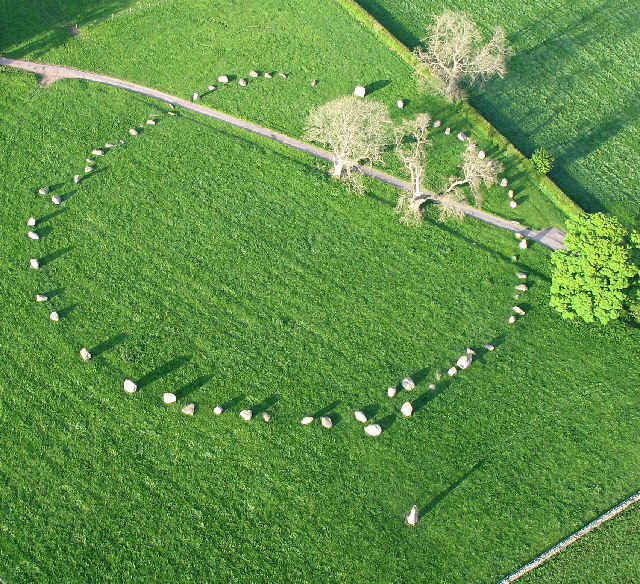
Bideford Witch Trial – Devon’s last witch trial in England
When was the last witch tried in England? The first three witches named from Bideford were arrested in August 1682, tried in Exeter on 14 August and hanged 25 August. The Bideford three were charged with sorcery or witchcraft on the basis of accusations which were no more than gossip.
Lloyd was accused of causing the death of several persons through the black arts to which she confessed. The other two were accused of causing sickness through witchcraft. It is known that Alice Molland was accused and sentenced to death for witchcraft in Exeter in 1685, though it seems no documentary evidence of her actual execution has been found.
A mural in Musgrave Row, Exeter, by the library, depicting scenes from the city’s history, represents the Bideford three in a stereotypical image of pointed hats and round a cauldron.
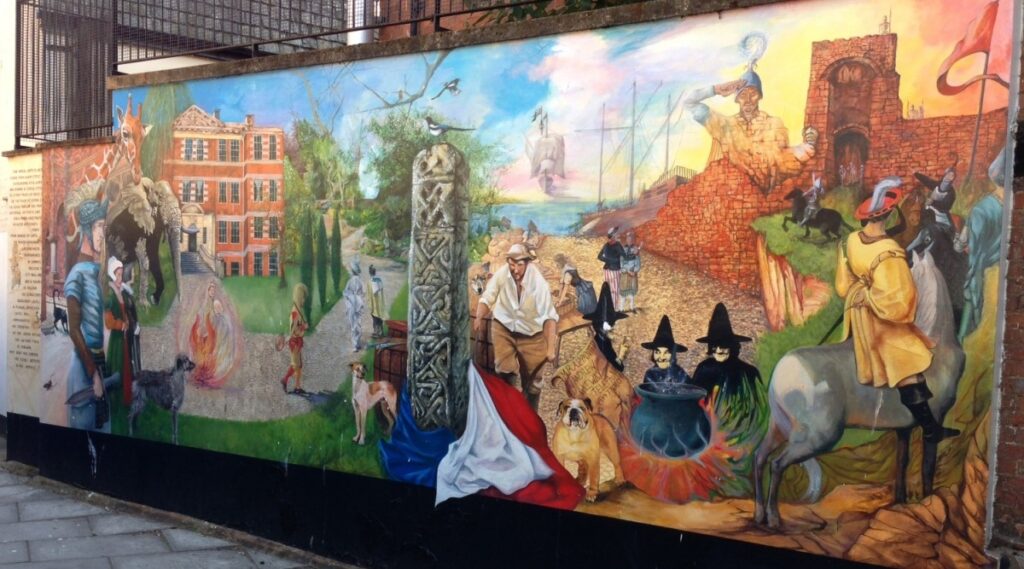
A plaque in their memory is set into the wall of Rougemont Castle in Exeter. The plaque is on the ruined gatehouse of Rougemont Castle, Castle Street, Exeter
The inscription reads:
The Devon Witches. In memory of Temperance Lloyd, Susannah Edwards, Mary Trembles, of Bideford, died 1682, Alice Molland, died 1685, the last people in England to be executed for witchcraft, tried here & hanged at Heavitree. In the hope of an end to persecution and intolerance.
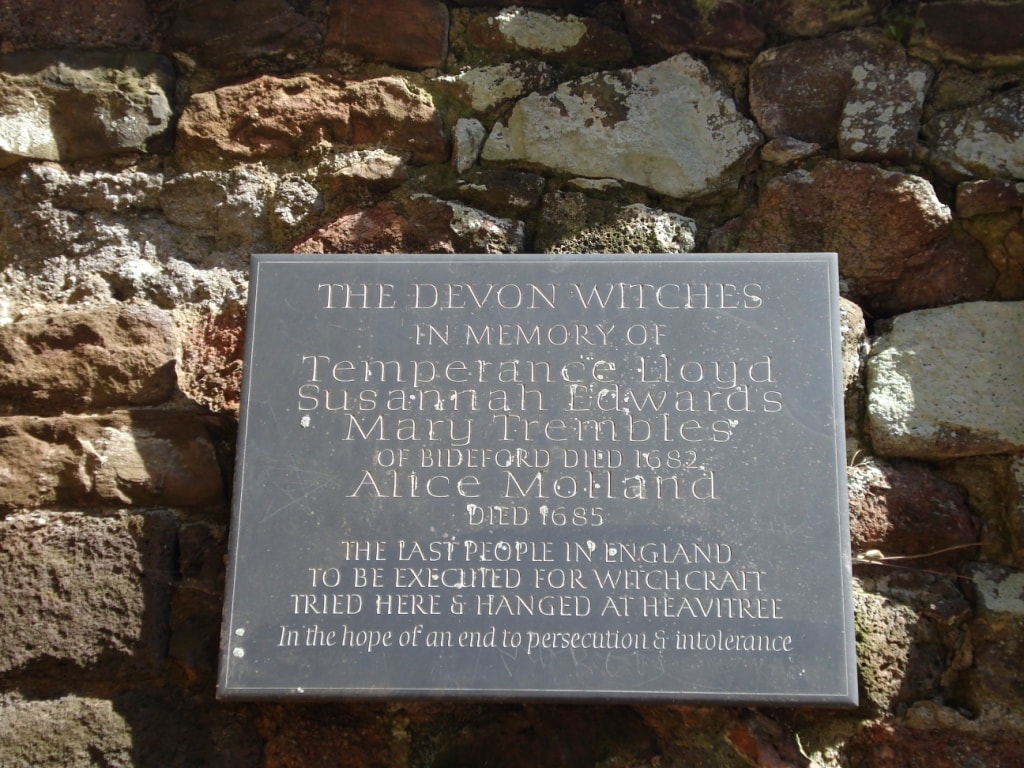
Here are some more fascinating historic sites in the UK and Ireland
Roman sites to visit in the UK
Pin it for later
